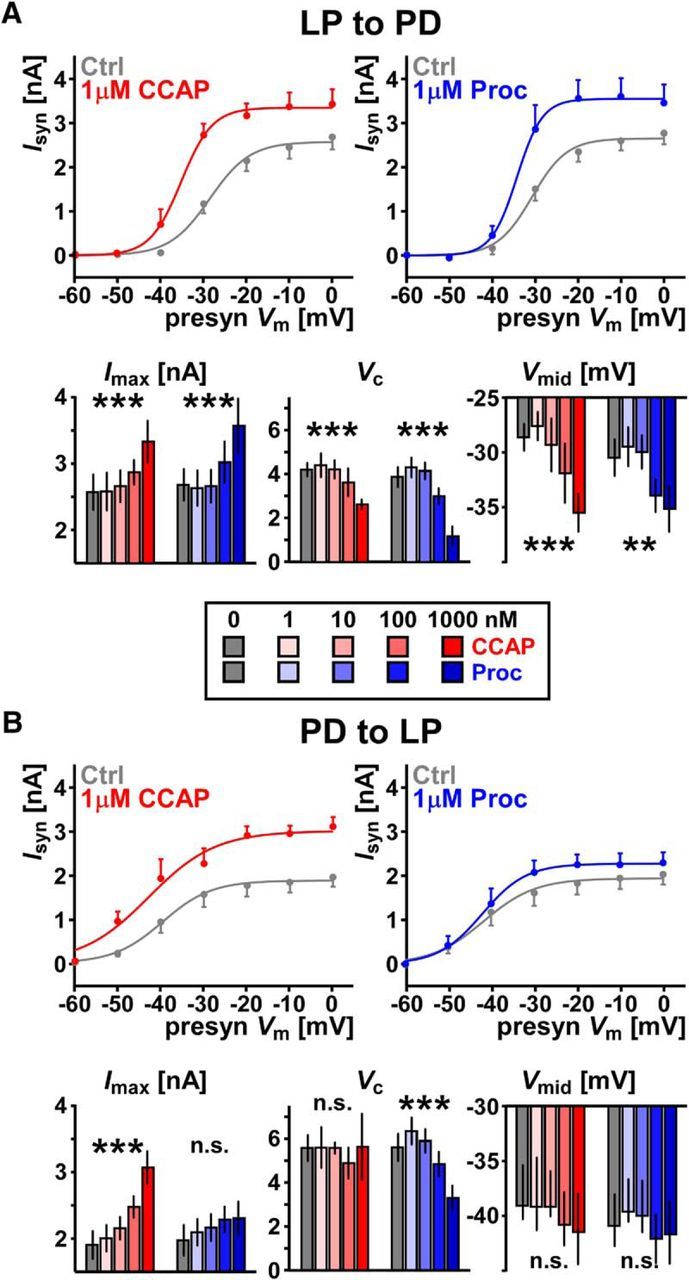Figure 2.

CCAP and Proc modulate the synapses between the LP and PD neurons in a dose-dependent manner. A, Both CCAP and Proc increase the amplitude of the LP to PD postsynaptic current (Isyn). Top panels show mean and SEM of Isyn as well as sigmoidal fits for control and modulators applied at the maximum concentration of 1 μm. As the applied concentration is increased, CCAP increases Imax (F(4,16) = 18.4, p = 7.83 × 10−6), decreases the slope factor Vc (F(4,16) = 7.98, p = 0.00098), and decreases Vmid (F(4,16) = 14.3, p = 3.78 × 10−5). (All tests one-way RM-ANOVA, n = 5). Proc has a similar effect on these three parameters (F(4,20) = 7.32, p = 0.00084 for Imax, F(4,20) = 30.4, p = 3.05 × 10−8 for Vc, and F(4,20) = 5.24, p = 0.0047 for Vmid, one-way RM-ANOVA, n = 6). B, As the applied concentration increases, CCAP, but not Proc, increases the amplitude of the PD to LP synapse. Top panels as in A. CCAP increases Imax (F(4,20) = 22.8, p = 3.31 × 10−7), but not Vmid (F(4,20) = 0.872, p = 0.498) or Vc (F(4,20) = 0.172, p = 0.95), Proc modulates Vc (F(4,20) = 12.4, p = 3.06 × 10−5), but not Imax (F(4,20) = 1.57, p = 0.22) or Vmid (F(4,20) = 2.19, p = 0.107). All tests one-way RM-ANOVA, n = 6. **p < 0.01, ***p < 0.001. All raw data are provided in Figure 2-1.
